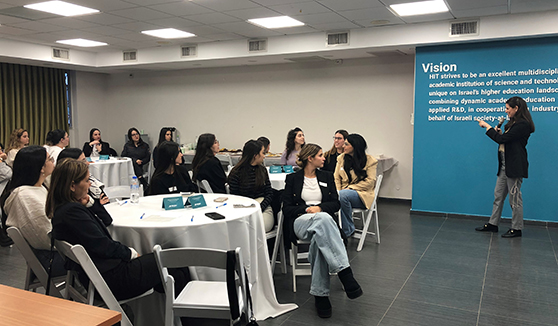Person-organization fit: Person-environment (PE) fit research embodies the premise that attitudes and behaviors result not from the person or environment separately, rather, from the relationship between the two. Person-organization (P-O) fit is a key facet of PE fit, which pertains to the similarity or match between individuals and their organizations. A major area of P-O fit research studies the perception of fit by members of organizations. This line of work asks individuals to report their fit with the organization, and then correlates this measurement with outcomes of interest such as job satisfaction, intention to leave, citizenship behavior, and organizational commitment. In my work I focus on the conceptualization of P-O fit in research (Bulmash et al, 2016).
Subjective or experienced well-being: Work, unquestionably a dominant aspects of life, is considered by people to be one of the least pleasant activities during the day. Commuting, interacting with the boss and co-workers, as well as being alone were ranked at the bottom of the list of enjoyable activities. The goal of this study is to examine the effectiveness of various well-being investments, and to highlight those investments that have the highest potential return-on-investment in terms of maximizing workers’ well-being (Bulmash, 2016). Another avenue is research on entrepreneurs’ well-being (Bulmash, 2016). Seth Godin introduced the concept of The Dip. This concept suggests the value of understanding entrepreneurship as a process rather than a singular category or phenomenon. In my work, I compare early-stage entrepreneurs with those in a later stage. I make a case for the need to distinguish between the two groups in order to have an improved comprehension of the different situations in which these individuals are found and the respective well-being experienced in each group.
Additional questions that I consider important regarding employees’ well-being include gender minority in organizations, age, economic conditions, as well as employment status.
Entrepreneurship fit and locus of control: Another research stream on entrepreneurs pertains to the examination of fit between the entrepreneur’s personality and the experience of and reaction to entrepreneurial adversity (i.e. financial difficulties) (Bulmash, 2016). Specifically, I consider the potential impact of locus of control on the association between entrepreneurial adversity and resilience (as expressed in reported physical health and well-being). It is important to understand what factors drive entrepreneurs to demonstrate resilience in running their businesses, and what factors lead to the discontinuation of the entrepreneurial activity. “Shutting down” entrepreneurial projects also means substantial loss of time and money invested.
Post-capitalist work values and acceptance of authority: While most workplaces in capitalist societies prioritize profitability, efficiency, growth, workers do not necessarily prioritize these values over different values such as workplace friendships, safe job, interesting work, and more. Research shows that individuals may work for various nonmonetary rewards such as love, emotional support, protection, companionship, a sense of purpose, a sense of self-worth, or the enjoyment of working, and it is valuable to consider the impact of value incongruence on various organizational outcomes. One outcome of interest is acceptance of authority. If the values promoted by the organization lead to certain demands from managers and supervisors, these demands may not deem worthwhile to the employee who hold different, post-capitalistic work values. I look at the impact of value incongruence and its impact on obedience in different cultures. Another avenue is the consideration of environmentalism-related values, which may collide with financial aims promoted by top management in the large majority of contemporary organizations worldwide.
Loyalty and commitment to organizations: Organizational loyalty is defined in many different ways in the OB literature. I examine and reconcile the various ways in which authors describe this construct, while also pertaining to a related concept – organizational commitment.




